Carbon Offsets for Individuals: A Definitive Guide (+9 Top Verified Programs)
Offsetting is a great way for you as a private citizen to counter or reduce the effects of the CO2 you emit from your daily life routines.
So, aside from knowing how to buy offsets, how can you tell which is the best program or how offsetting will benefit you?
Let’s find the answers to these!
7 Common Types of Offset Programs
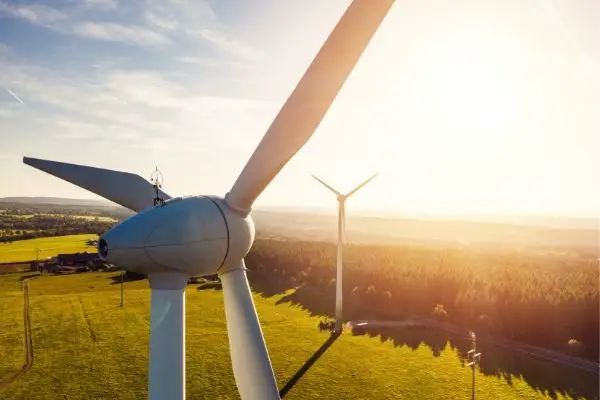
Before buying them, it’s great that you first know how carbon offsets work, then how each of the programs work, and which type of environmental projects your money is going to support.
The beauty of all these is that the projects are closely monitored by world-recognized third-party bodies. These are watchdogs set up to verify the number and the quality of carbon offsets sold by various programs.
Right now, the 6 most recognized offset projects include:
- Renewable Energy – These mainly deal with the innovation and development of energy sources such as solar, wind, biomass, hydropower, etc.
- Energy Efficiency – These are projects bent on producing things like energy-efficient lighting and cooking equipment.
- Farm Efficiency – These projects focus on providing greener agricultural solutions that prevent or reduce the amount of carbon given off by farm activities.
- Bio-sequestration – The main idea driving programs under this category is to get more trees that could absorb and reserve the emitted carbon into their systems. Projects here mainly focus on planting more trees and preventing further deforestation.
- Methane Capture – Methane is a dangerous gas that does more climate damage than carbon! These projects seek to solve the emission of this gas from wastewater treatment plants, landfills, and coal mines. The main aim here is to convert the captured methane gas into carbon that can then be neutralized in other different ways.
- Industrial Gases – These projects focus on reducing the number of industrial gases, like nitrous oxide, which is also far more destructive than CO2. These types of offsets are mostly bought by big businesses and major corporations.
- Carbon Capture and Storage – These projects’ goal is to capture CO2 straight from the source and store it in other less-destructive forms.
Other projects like Wildlife Preservation also help in the fight against greenhouse gas emissions by helping to build and sustain natural ecosystems around the world!
How Do You Know Which Offsets Are Good?
How do you tell that the offsets you want to buy are legit or will fulfill their goals as advertised?
A 2018 offsets report from the University of Pennsylvania listed 4 main points that you must look out for when crossing your checklist:
1. Permanence
Permanence determines whether the project will deliver solutions throughout the period stated in the program.
It is most often used when verifying tree planting projects. Permanence ensures that all planted trees will survive all the years required for them to fully offset the initial targeted number of CO2.
This quality gives you peace of mind knowing that the trees planted through your bought offsets will go through the least or NO harm as they grow.
…Not until they achieve their goal!
2. Additionality
It’s used to check whether there’ll be a reduced carbon dioxide emission from your lifestyle even without you buying the offsets.
What do I mean?
Well, if you planned on decreasing your air travel or driving frequency in the future, then buying carbon offsets now won’t bring any real additional value, will it?
This is because your plan to monitor your travels would still have reduced your carbon footprint after all.
See the sense?
3. Absence of leakage
This ensures that any CO2 you reduce does not pop up in other places on the globe.
Think of it as spill-proof insurance!
When, for instance, you plant trees in a local forest in Alabama to reduce your carbon footprint but then cut trees in your backyard to build a swimming pool or whatever, then your bought offsets will have ZERO effects on carbon reduction.
You’ve just transferred the problem into your backyard.
4. Verification
Verification means that third-party organizations have vetted and confirmed that the offsets a program offers you meet all the above marks of quality.
So, it’s very important that you only buy offset that has third-party verification on them.
Top 9 Offset Programs for Individuals
Each one highlighted here has met several strict requirements that I’ll also be talking about in the next section.
Let’s take a quick walkthrough:
1. Ecologi

Ecologi stands out as the best program offering offsets for individuals. It has one of the most flexible and affordable plans in the market that allows you to contribute for as low as $10.50 per month!
Even sweeter is the fact that Ecologi also has amazing plans for households too; a good way of killing two birds with one stone!
As a contributor, you can view updates of your chosen projects through their website with a lot of ease.
The company has innovative personal objectives that you can take up to reduce your carbon footprint. Some of them include a 1-week dairy-free goal, shopping locally, lowering meat intake, and cycling more to work.
For such a wonderful organization, the fact that they’re a limited company may be a bummer for some. This is because limited liability providers may get heavy taxation from the government. In the long run, the burden may fall on you in the form of high prices for each offset bought.
Nevertheless, that shouldn’t be a deal-breaker considering the level of success seen in most of their projects.
What they offer:
Ecologi currently handles:
- Reforestation
- Efficient cooking
- Biogas
- Methane capture
- Water distribution & conservation
Accountability
As an LLC, Ecologi carries out thorough auditing and makes its tree planting invoices both transparent and accessible to the public.
Other than that, they also have third-party verification done by the Gold Standard and Verified Carbon Standard.
Pros:
- Grow your own forest
- Quality offsets offered
- Great personal reduction programs
- Third-party verified
- Affordable plans
Cons:
- Chances of high taxes from bulk purchases
2. SeaTrees by Sustainable Surf
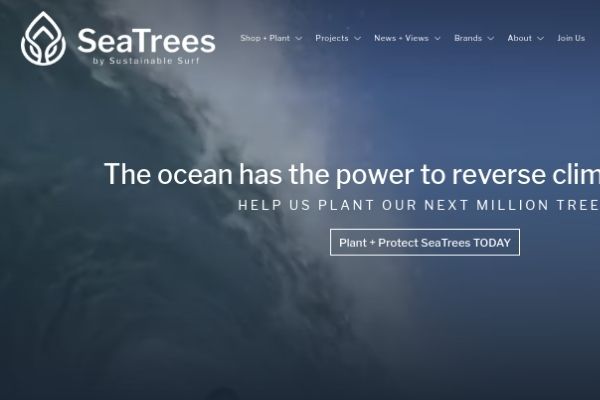
Are you a surfer or ocean hugger? Then SeaTrees’s program is definitely a cut-to-fit offsetting solution made just for you!
Recognized by the United Nations, SeaTrees is a verified provider offering blue-carbon credits to individuals and even businesses alike.
Blue carbon refers to all the carbon stored by marine and coastal ecosystems.
SeaTrees sets itself apart from the rest in this list by concentrating its efforts on carbon sequestration through coastal ecosystems. They use SeaTrees Tokens in place of regular carbon credits. The tokens combine certified credits with early-stage support for creative blue carbon projects.
They have a passionate drive towards conserving and restoring kelp forests, mangrove forests, and coastal watersheds throughout the world using credits bought by individuals and volunteer businesses.
SeaTree even goes a step further to ensure that their programs support the UN’s SDGs (Sustainable Development Goals) that comprise:
- Eliminating poverty
- Zero hunger
- Good health
- Gender equality
- Clean water
- Quality education
- Climate change
Their major success story lies in the Biak Region in Indonesia. Aside from regenerating the mangrove forests there, they have also provided various forms of long-term employment to the local community members.
What they offer:
Since SeaTrees strongly focuses on the restoration of coastal ecosystems, most of their projects are maritime. They include:
- Mangrove afforestation/reafforestation
- Coral reef restoration
- Kelp forests
- Watershed conservation
- Seagrass meadows
- Ridge-to-Reef preservation
Accountability
SeaTrees gets its monitoring and approval mainly through the International Emissions Trading Association’s third-party organizations called the VCS (Verified Carbon Standard).
So, you have nothing to worry about when it comes to the quality of offsets offered to you.
Pros:
- Effective coastal sequestration projects
- Serves individuals and businesses
- Improves communities’ social and economic welfare
- Affordable monthly plans
Cons:
- Limited to coastal and maritime projects
3. Sustainable Travel International

Sustainable Travel International has found its way to this list as the best carbon offsets program dedicated to tourists and glob-trotters.
They have put a lot of work and effort since 2002 to bring out travel policies that have the best interest of the climate. Over the years, this program has partnered with various governments, travel agencies, and airlines to come up with more advanced and integrated models of tourism.
Their working motto is to reduce the ‘Nays’ and increase the ‘Yaays’ of travel tourism in one sweep.
And although they look more focused on businesses, they also deal with individuals who want to chip into the net-zero campaign in their own small ways.
It is their dynamic offsets and customizable subscriptions that got my nod.
What they offer:
Sustainable Travel International offers the following projects:
- Wind farms
- Forestry
- Biodigesters
- Water filters
Accountability
Standard Travel International partners with several third-party agencies to give you legit and the best quality offsets.
Some of the third-party verifiers include:
- Gold Standard
- Verified Carbon Standard (VCS)
- Plan Vivo
- American Carbon Registry (ACR)
- The Climate, Community, and Biodiversity Alliance
- Climate Action Reserve (CAR)
Pros:
- Third-party verification
- Projects support UN’s SDGs
- Quality assurance
- Dynamic packages for individuals
- Simple carbon footprint calculator
Cons:
- Few educational resources
4. Native Energy

Native Energy tags in closely as another organization giving great solutions to private individuals. They have fabulous plans for travel, businesses, and events.
They have an easy-to-use calculator that lets you know how much you’ll need to pay for your offsets. You can also subscribe to a monthly, quarterly, or yearly plan depending on what fits your budget.
Native Energy again covers a wide range of projects that generally span across reforestation and greenhouse gas reduction.
Their platform is user-friendly and has a pretty strict process of issuing carbon offsets.
What they offer:
Native Energy has several projects under their belt, including:
- CO2 reduction
- Clean water distribution
- On-farm projects
- Renewable energy
- Nature-based solutions
Accountability
Third-party agencies monitoring their offsets include:
- Gold Standard
- Plan Vivo
- VCS
- Climate Action Reserve
- The Climate, Community, and Biodiversity Alliance
Pros:
- Certified B Corp
- Third-party verified
- Public Benefit Corp
- Great transparency
Cons:
- Mostly for US-based individuals or businesses
5. MyClimate
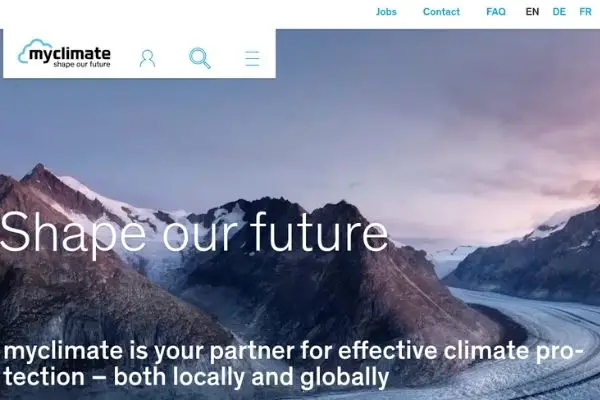
MyClimate is one of the oldest carbon offsets programs around.
Looking for a diverse pool of projects? Check! Strict offset oversight? Check! Educational programs to keep you in the loop? Check!
One must admit that MyClimate has truly outdone itself.
Their main headquarters are in Zurich, Switzerland and they have won more awards than you can count under the non-profit offset programs category.
Adding more shine to their glory, they’ve also taken part in several community welfare initiatives that have improved the livelihoods of the people they work with.
To crown it all, MyClimate has strong business and public ties thanks to the highly-effective projects that they run.
What they offer:
MyClimate’s vast list of projects include:
- Energy efficiency
- Hydropower
- Forestry
- Wind power
- Biogas
- Waste management
- Efficient cooking
- Biomass
- Solar power
- Water treatment & conservation
Accountability
The organization also receives project certification from:
- Gold Standard
- Plan Vivo
- Clean Development Mechanism (CDM)
Pros:
- Simple calculator
- Lots of educational resources
- Tons of projects available
- Third-party verified
Cons:
- Hard-to-navigate website
6. Terrapass
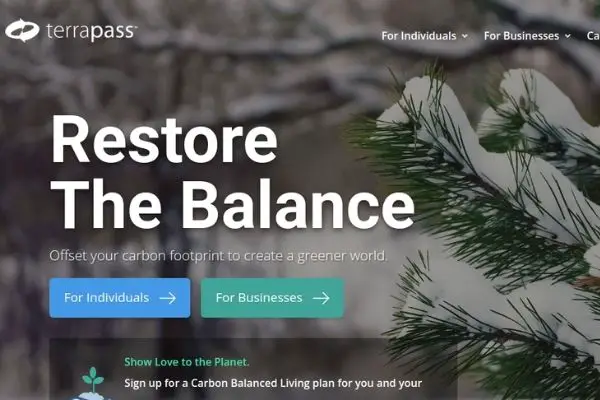
Many people pick Terrapass as their go-to solution for offsetting carbon emissions from organized events. What they don’t know is that Terrapass also has lovely calculators that you can use to sum up and offset individual emissions.
How cool is that?!
In fact, if you track back a few years, you’ll discover that Terrapass was first formed to help individuals offset emissions from their driving and household activities.
All in all…
If you’re skeptical about committing, then you can take advantage of Terrapass’ amazing monthly subscription plan!
They have a couple of cool projects currently running though it’s been a while since they introduced a new one.
What they offer:
Terrapass’ project portfolio takes care of:
- Wind power
- Landfill gas capture
- Organic waste management
- Farm power
- Coal mine methane capture
- Water restoration
Accountability
Terrapass’ projects receive a third-party review from:
- Gold Standard
- Climate Action Reserve
- Verified Carbon Standard
- American Carbon Registry
Pros:
- Monthly subscription available
- Third-party certified
- Dynamic calculators for individuals, groups, and businesses
Cons:
- Outdated project portfolio
7. Clear
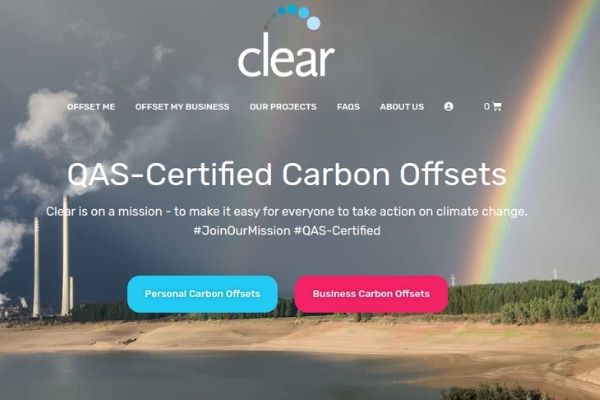
Clear is the best offset program that gels with your everyday routine.
Their calculators are intuitive, easy to use, and cover a wide variety of stuff including your home, car, motorbike, internet usage, and many more!
This program also offers unique commuting calculators that allow you to keep track of your daily movements. All you have to do is fill in:
- The means you use to commute
- Distance covered
- Number of days involved
Afterward, their commuting calculator will show you how far you go in a week and how many offsets you’ll need to counter the effects in the end.
That’s effortless!
What they offer:
Some of Clear’s projects include:
- Efficient cooking stoves
- Hydropower
- Wastewater treatment
- Clean energy
- Forestry
- Methane capture
- Landfill gas capture
- Biomass
Accountability
Clear promises its buyers one of the highest quality of carbon offsets in the market.
They also get their Certified Emission Reduction (CER) clearance from third parties such as the Clean Development Mechanism and Gold Standard.
Pros:
- Very convenient calculators
- Third-party verified
- Certified B Corporation
- Wide range of projects
Cons:
- A bit expensive
8. Climate Neutral Now!

ClimateNeutralNow is another popular carbon offsets program that has partnered with the United Nations Framework Convention on Climate Change (UNFCCC).
Most of their offset projects aim at removing, avoiding, or reducing greenhouse gas emissions from our atmosphere. Their projects are also officially certified by the UNFCCC and carry out their objectives to full capacity!
ClimateNeutralNow is a special program that has most of its projects set in developing countries around the world.
Despite this, they still offer Certified Emission Reductions to anyone who wants to offset their carbon emission!
What they offer:
We can safely argue that ClimateNeutralNow has the most extensive list of offset projects in the industry. A visit to their page will show you that they’re even grouped under the various industries they work under.
Examples are:
- Fossil fuel switch
- Hydropower
- Energy-efficient households
- Energy-efficient industries
- Waste handling and disposal
- N20 capture
- Agriculture
- Reforestation & Afforestation
- Wind and solar power
- Biomass
Accountability
ClimateNeutralNow takes great pride in its partnership with Clean Development Mechanism.
CDM is the main overseer of their offset projects that spread across the African, Asian, and Oceania continents.
The body carries out rigorous vetting on all the projects to ensure that they’re giving buyers a bang for their bucks.
Pros:
- Highly effective projects
- Third-party verified
- In line with UN’s SDGs
- Affordable plans
Cons:
- Mostly dedicated to developing countries
9. Cool Effect
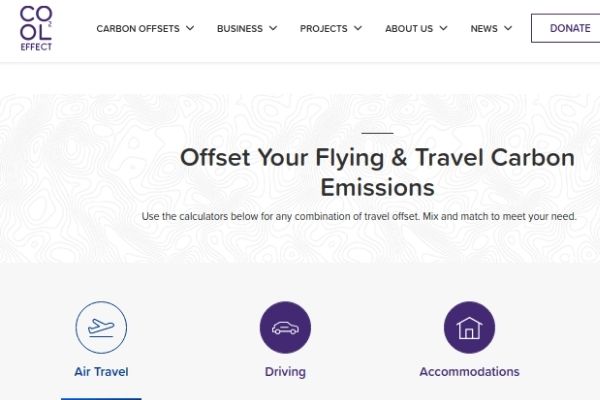
Cool Effect has better carbon offsetting programs for businesses than for private individuals.
Nonetheless, it has earned its spot on this list because of the convenient calculator and easy-to-access offset programs for individual travel. It covers flights, drives, cruises, and accommodation.
Now, Cool Effect strives to channel more than 90% of every dollar received towards their many projects. The good news is that they have some of the most popular and well-received projects in the market.
The company also has a good rapport with several major sciences, environmental, and technological organizations around the globe. Their input helps the Cool Effect team to keep on coming up with creative and sustainable environmental solutions.
What they offer:
Their main projects include:
- Efficient cooking stoves
- Forestry
- Grassland conservation
- Methane capture
- Blue carbon
Accountability
Cool Effect ensures that all their projects undergo triple-verification through major standards like:
- Gold Standard
- Verified Carbon Standard
- Climate Action Reserve
- American Carbon Registry
- Clean Development Mechanism
The projects are then screened against UNFCCC’s standards before going through a final internal review from Cool Effect’s quality assurance department.
Their system’s pretty much scam-proof.
Pros:
- Effective projects
- Third-party verified
- Great for individual travel
Cons:
- Mostly for US residents
How Did We Pick these Programs?
I picked all of the programs based on a 5-factor checklist that helps to identify serious and result-oriented offset sellers.
1. Environmental Integrity
It helps to determine whether the respective offset will bring actual change or impact in the climate war.
The best programs should always have projects that have been proven to prevent or reduce greenhouse gas emissions.
2. Sustainable Development Goals
Since it’s a fight to make the whole world better, offset projects need to show efficiency in developing new sustainable energy solutions.
Every project has to do this in the most eco-friendly way possible.
3. Third-Party Verification
These standards verify that both quantity and quality claimed against each offset are valid. Doing so ensures that the value placed in costing for quoted emissions is correct.
Examples of approved carbon standards include Gold Standard, Verified Carbon Standard, Clean Development Mechanism, among others.
4. Carbon Calculators
How easy a program’s carbon calculator is to use plays a huge role in deciding whether or not it’s convenient to the users.
Most (if not all) of the organizations above have some of the simplest calculators that give you seamless time when checking your emissions and offsets due.
5. Size of Their Offset Portfolio
The bigger the project portfolio of a specific program is the bigger the impact it’s likely to have on the environment.
More projects equal more diversity. And it is through such vigorous diversity that we get several solutions to tackle the main problem, i.e., global warming.
Frequently Asked Questions
How do I know that my purchase will make a difference?
Your purchase has a high chance of making a difference if you buy offsets from a verified seller.
The best way to point one out is to check and see if they have a carbon standard certification from any of the UN-approved third-party bodies. These include the Verified Carbon Standard, Gold Standard (strictest), Clean Development Mechanism, etc.
How do I buy offsets?
You can buy carbon offsets by visiting any organization that has plans for individuals.
The program should have a carbon calculator that’ll help you know the amount of emission you give off from your daily routines. Afterward, you can decide to buy the recommended offsets that are equivalent to your carbon emission.
Pricing varies depending on a lot of factors so confirm the cost per metric ton on the website before moving forward.
How do I choose a carbon offset provider?
The best way to choose an offset provider is by checking whether the program’s projects show environmental integrity. This is proof that the offsets being offered do make a notable difference towards reducing and preventing CO2 emissions.
It’s also important that the provider meets the sustainable development goals which ensure that the projects find eco-friendly solutions.The seller should also have an easy-to-use calculator that makes tallying your daily emission and the equivalent offset required simple.





